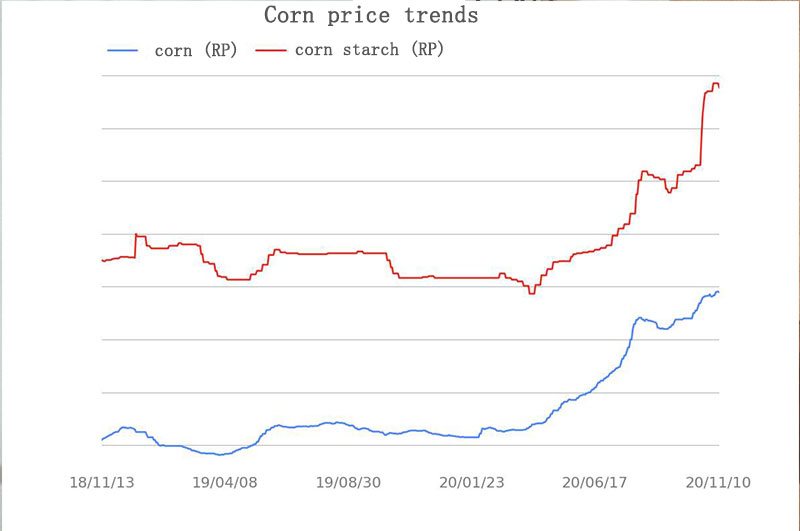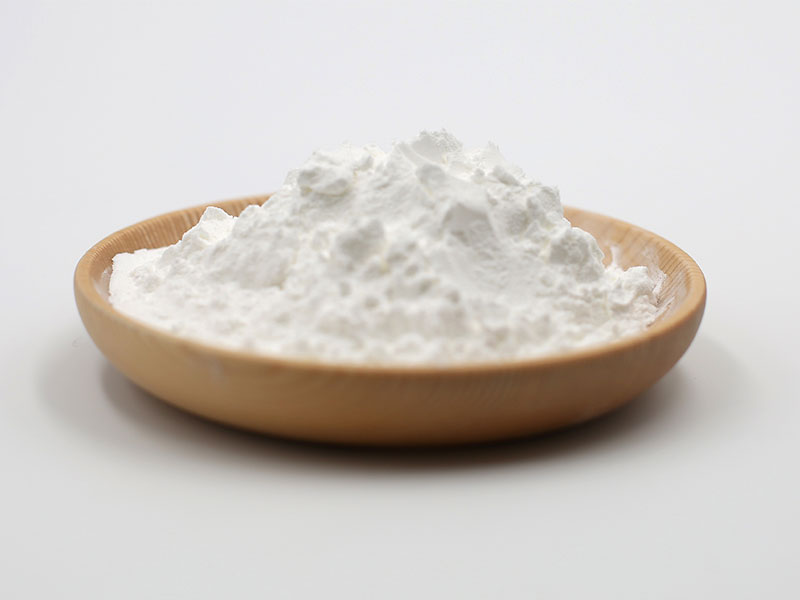From 2016 to 2020, the price trend of corn starch in the main producing areas generally showed a trend of falling before and then rising. Since 2016, the price of corn starch has entered a period of overall rise. The first rising stage is from 2017 to 2018. The overall price continues to rise, and the upper space is gradually opened. Entering the industry integration stage in 2019, the overall price trend fluctuates within the range, and the overall price is relatively stable. However, starting in 2020, the market price of corn starch began to rise strongly under the support of cost and supply and demand, and corporate prices continued to rise. The spot price fluctuations in 2021-2022 will become more frequent, the space above the market price will be opened, and the price of corn starch will show a trend of rising all the way.
In 2020, the spot price of corn starch has soared. According to relevant data, the price difference between the price of corn starch in 2020 and 2019 has widened significantly.

First of all, in the first quarter, the spot price of corn starch was basically dominated by weak and fluctuating trends. There were two main reasons. First, logistics and transportation were not smooth before and after the Spring Festival. There was a backlog of corporate orders and shipments were blocked, so prices could only be reduced. single. Another important reason is that due to the impact of public health emergencies, downstream companies have delayed the resumption of work, insufficient worker arrival rates, low start-ups, and insufficient demand release, which forced prices in production areas to fall. After the price reduction in the February-February period, the profit margin of corn starch production enterprises has been completely squeezed, and the loss situation is increasing.
Beginning in the second quarter, the price of corn starch stopped falling and rebounded and the price continued to rise, mainly driven by the increase in corn prices. From April to May, the auction of temporarily stored corn began, but the auction transaction price continued to rise and rise, and the transaction rate remained at 100% for four consecutive auctions. Supported by the high auction prices, traders maintained a high level of bullish enthusiasm, controlled the pace of shipments, and deep processing companies had low raw material arrivals. They could only maintain normal production by raising corn prices, and cost pressure continued to rise. At the same time, the demand for fructose is in the peak consumption season, and the demand for beverages, cold drinks, and beer has steadily increased, and the demand for corn starch has increased. Coupled with the encouragement of the state to develop the “market stall economy”, consumption stimulus from the resumption of work and school in various regions, the demand for food, paper packaging, and other industries has rebounded, and the market has sufficient favorable factors to promote the continuous rise of corn starch prices.
In the third quarter, the price of corn starch was mainly up-down-up, and the price fluctuated frequently with a large span. In July, the premium of temporary reserve auctions continued to exceed market expectations. The continuous high premium and high turnover of temporary reserve auctions contributed to the market’s bullish mentality. Traders were less willing to go out of the warehouse and the effective supply of corn in the corn market was insufficient. Driven by the strong cost, the price of corn starch has continued to hit new highs, and the price in the main producing areas has risen to the level of the same period in 2015, which is the highest price since corn entered the market. However, starting in August, the increase in raw material prices slowed down, unable to support high starch prices. In addition, the market operating rate steadily rebounded, downstream demand has weakened successively, price cuts and orders have become the main way for enterprises to compete, and corn starch prices have entered a downward channel. After about a month of weak adjustment, with the outbreak of double-festival demand, the company’s supply of goods has improved and prices have re-entered the upward channel.
The fourth quarter is the listing stage of new grains. In October, due to the fall of some plots in the production area, the harvesting progress was slow, the supply of high-quality grains was tight, and deep processing enterprises were actively purchasing, and the price of corn rose strongly. At the same time, the downstream terminal market inventory is low, replenishment demand is heavy, the supply and demand of corn starch market is tight, and the price rises again at a high level. Affected by cost, demand, mentality, weather, and other aspects, the price of corn starch fluctuated frequently in the fourth quarter. Especially in November, the market for half a month has experienced an up-down-up trend, and the upstream and downstream markets are cautious and wait-and-see.
The overall increase in demand in 2020 is less affected by public health events than in the same period. In particular, the spot price of corn starch that has been constrained by demand in the fourth quarter has repeatedly fallen. However, under the strong support of cost, it is difficult for the price of corn starch to have a substantial downside. From December to January, as the year-end stocking demand began, market purchases and sales picked up, and the spot price of corn starch may run in a more volatile general trend. However, under the influence of weather, supply and demand, raw materials, etc., the price fluctuates more. For frequent.

Towards the end of the year, major manufacturers began to arrange destocking and factory holidays, so a large range of suppliers are currently under pressure from stock supply. At the same time, for customized production, more factories choose to wait and see. In the early days, we stored enough corn raw materials. At the same time, in November, our organic farm also provided us with enough organic corn raw materials. Therefore, even with the tight supply from all suppliers, we still maintain a large inventory of organic corn starch (and conventional corn starch) and non-standard customization capabilities.